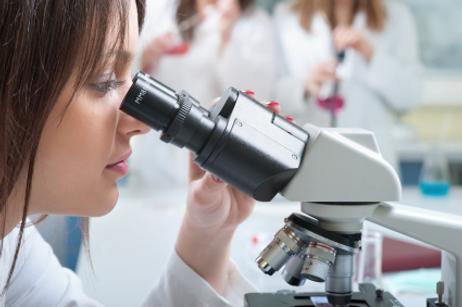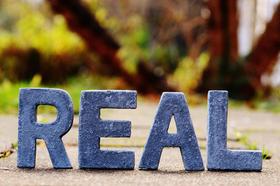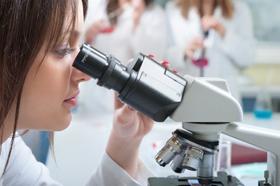In the need to inspire more students to STEM fields today, some schools are hiring more science teachers. However, without the proper equipment, these teachers may be fairly limited in what they can teach their students. Fortunately, high school and middle school students in Hawaii will not be at a loss for the proper science equipment any longer, thanks to a budding partnership between the large school district and the University of Hawaii John A. Burns School of Medicine.
Repurposing Creates New Opportunities
The Pacific Business News reports that the partnership between the public schools in the state and the University medical school began three years ago. At that time professional development program at the medical school teamed up faculty from the Center for Cardiovascular Research and local high school teachers to enhance the quality of learning for high school science students in the state.
The original purpose of the partnership was to provide professional training to high school science teachers, allowing them to see firsthand the latest techniques in the school’s advanced medical procedures. Teachers were able to take the knowledge they gained back into their classrooms. However, the assistant professor at the center who was leading the training, Rachel Boulay, discovered that most of the schools in the state did not have the equipment necessary to bring teaching to a real-world level.
Boulay’s discovery led to an expanded partnership between the college and the public school district. Today, donations of thousands of dollars of valuable science equipment have been given to high schools throughout the Islands – equipment the medical school no longer used but the high schools desperately needed. Equipment has been received by 13 high schools on four of the Islands, as the beneficial fingers of this project continue to enjoy a longer reach.
“We found that many of the schools didn’t have basic supplies and equipment,” Boulay, told Pacific Business News. “As the demand for STEM professions increases, so does the need for equipment in high school science labs.”
As the full need became clearer to university staff, the medical school facilities also formed a partnership with Kapiolani Community College to organize a donation drive. The drive targeted retired researchers that no longer had a use for their laboratory equipment. Researchers involved in the drive came from the University, as well as Leahi Hospital and the community college.
The donations weren’t just good for the high schools receiving the equipment – they also saved the university the cost of properly disposing of the items. Lab equipment must be destroyed before it can be disposed of in many cases, which costs money to be processed. In addition, the equipment will be repurposed, rather than filling up landfills on the Islands.
All of the donated equipment was cleaned and repaired by volunteers from the Center for Cardiovascular Research, according to the center’s website. Once the equipment was ready, those same volunteers made the deliveries to high schools on Hawaii Island, Oahu, Maui, and Kauai.
This video offers an example of how donating used scientific equipment works in Hawaii Schools.
Schools Enjoy Many Benefits of Donations
No one is happier about the new collaboration than the high schools receiving the much-needed equipment. Amy Ancheta, a teacher at Baldwin High School on Maui, stated at the University of Hawaii website, “The equipment and supplies were in excellent condition and of such high quality that we at the high school level probably could never afford to purchase them.”
Ancheta added that her classes have already used the mortar and pestle for a DNA extraction lab. Next month, she plans to use a donated dissecting microscope for her unit on plants and animals. Ancheta was quoted again on the university’s website, saying, “These pieces of equipment and supplies will benefit a wide range of students to experience hands-on, dynamic, real science.”
The schools that received a portion of the donations from the university include:
- Baldwin High, Maui
- Lahainaluna, Maui
- Kapaa High, Kauai
- Ewa Makai Middle School, Oahu
- Farrington High, Oahu
- Ilima Intermediate, Oahu
- Kalaheo High, Oahu
- Kapolei High, Oahu
- Kealakehe High, Hawaii
- Leilehua High, Oahu
- McKinley High, Oahu
- Nanakuli High and Intermediate, Oahu
- Roosevelt High, Oahu
In some cases, teachers drove their own vehicles to a central location to load up equipment and take it back to their classrooms. David Wong, a teacher at Ewa Makai Middle School, was pictured on the website for the Center for Cardiovascular Research, showing off a truck bed filled with science equipment of all kinds.
This video reports on a donation of science equipment.
Taking High-Level Equipment to the Next Level
While the equipment that has been donated was primarily used in a medical school setting, it may be used in a variety of public school science classes, allowing students to participate in real experiments they might not have gotten to do otherwise. This high-level equipment previously used by students conducting research for advanced degrees is now seeing new life from students who are just beginning to delve into the wonderful world of science.
Despite the differences between the original and current uses of the various test tubes and laboratory benches, the university medical school sees distinct advantages to sharing their goods with younger, less experienced students.
“We know our future health professionals can be found in classrooms at any grade level,” Jerris Hedges, Dean of the University of Hawaii Medical School, stated at Pacific Business News. “Through a number of programs, our faculty and MD students reach out to young people to encourage them to consider health careers, and to empower them with the knowledge that they could succeed in any number of careers using their unique talents.”
Questions? Contact us on Facebook. @publicschoolreview












